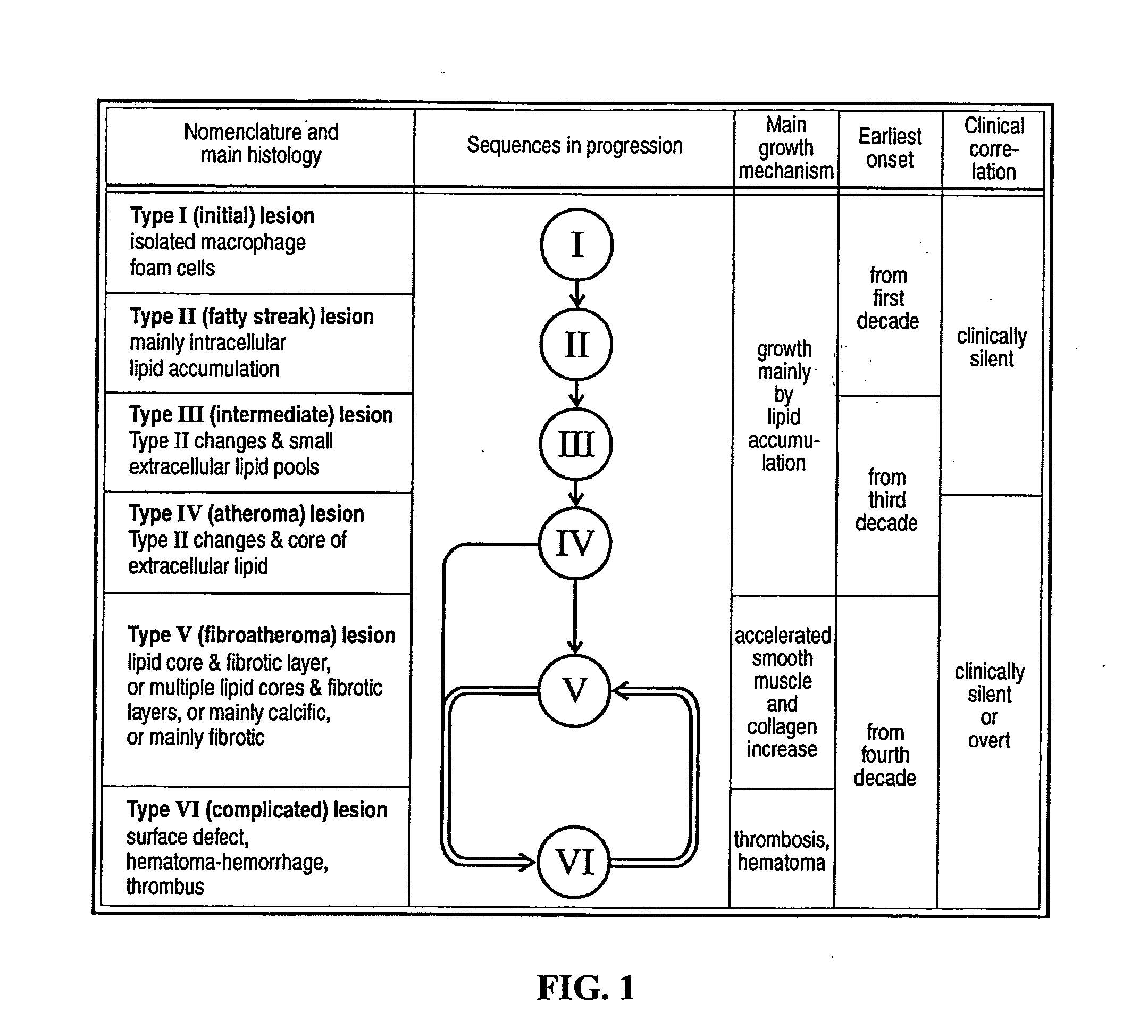Method and kit for detecting a risk of acute myocardial infarction
a myocardial infarction and kit technology, applied in the field of coronary heart disease diagnosis, can solve the problems of putting a huge burden on long-term care resources, irreversible cell death and tissue damage of the myocardium muscle, and the inability to revive or replace myocardial cells that die, and achieve the effect of increasing throughput and lowering operating costs
- Summary
- Abstract
- Description
- Claims
- Application Information
AI Technical Summary
Benefits of technology
Problems solved by technology
Method used
Image
Examples
Embodiment Construction
Representative Target Population
[0055] An individual at risk of AMI is an individual who has at least one risk factor, such as family history of AMI, cigarette smoking, hypercholesterolemia, elevated LDL cholesterol, low HDL cholesterol, hypertension and elevated blood pressure, diabetes mellitus, glucose intolerance, insulin resistance and the metabolic syndrome, obesity, lack of physical activity, elevated inflammatory marker, and an at-risk allele or haplotype with one or several AMI risk SNP markers.
[0056] In another embodiment of the invention, an individual who is at risk of AMI is an individual who has a risk-increasing allele in an AMI risk gene, in which the presence of the polymorphism is indicative of a susceptibility to AMI. The term “gene,” as used herein, refers to an entirety containing all regulatory elements located both upstream and downstream as well as within of a polypeptide encoding sequence, 5′ and 3′ untranslated regions of mRNA and the entire polypeptide ...
PUM
| Property | Measurement | Unit |
|---|---|---|
| Thickness | aaaaa | aaaaa |
| Pressure | aaaaa | aaaaa |
| Concentration | aaaaa | aaaaa |
Abstract
Description
Claims
Application Information
 Login to View More
Login to View More - R&D
- Intellectual Property
- Life Sciences
- Materials
- Tech Scout
- Unparalleled Data Quality
- Higher Quality Content
- 60% Fewer Hallucinations
Browse by: Latest US Patents, China's latest patents, Technical Efficacy Thesaurus, Application Domain, Technology Topic, Popular Technical Reports.
© 2025 PatSnap. All rights reserved.Legal|Privacy policy|Modern Slavery Act Transparency Statement|Sitemap|About US| Contact US: help@patsnap.com

